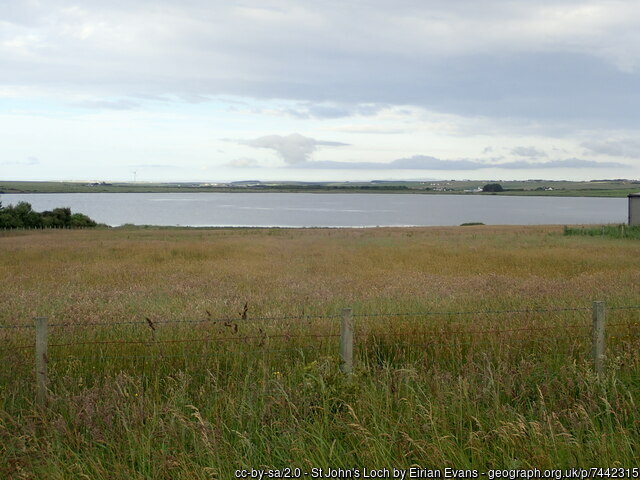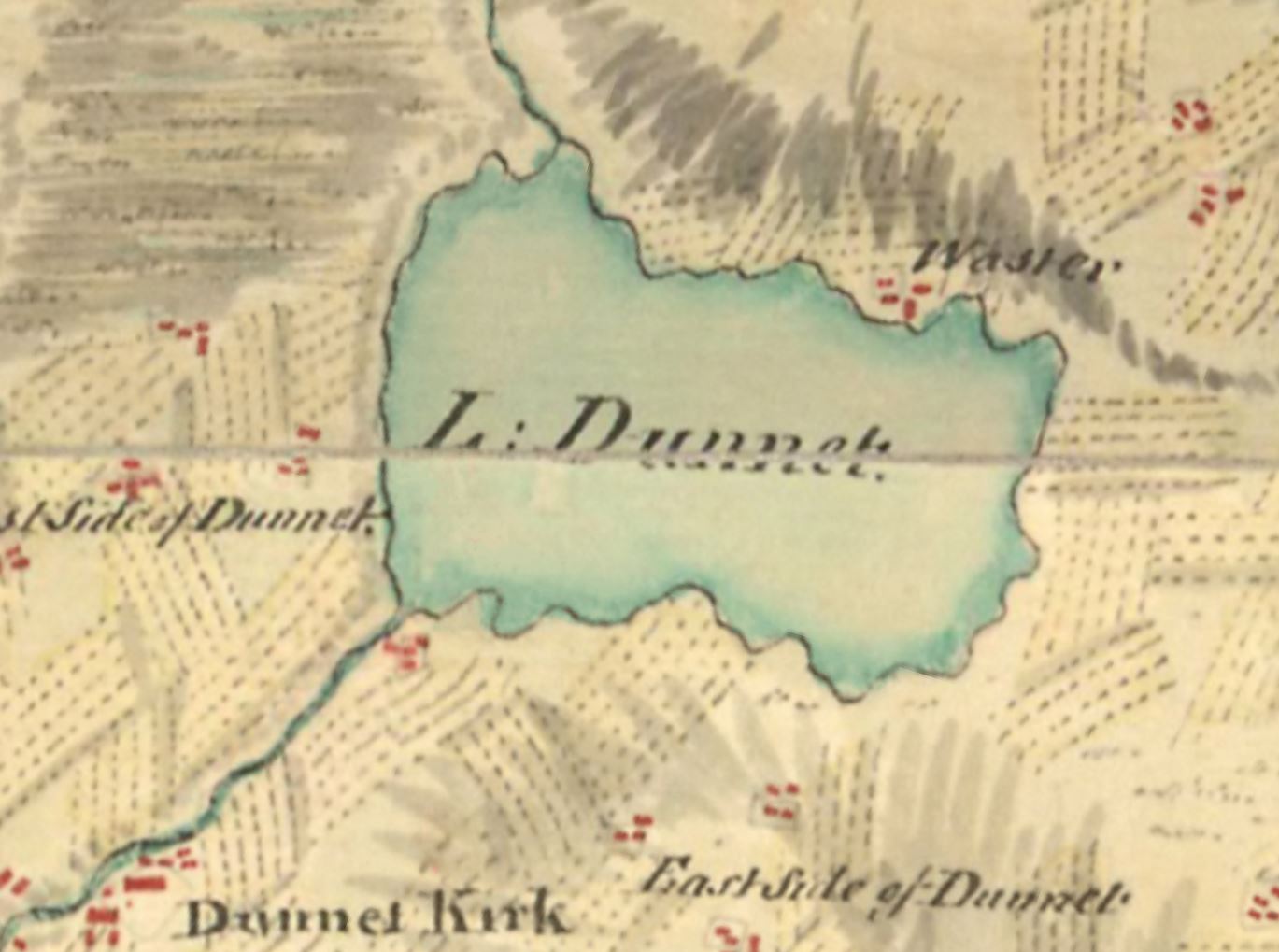 |
Dedication: Saint John Location: Dunnet Coordinates: 58.6301N, -3.33503W Grid reference: ND225721 Heritage designation: none |
 |
Dedication: Saint John Location: Dunnet Coordinates: 58.6301N, -3.33503W Grid reference: ND225721 Heritage designation: none |
St John's Loch is the most northerly holy well (or "holy loch") on the British mainland. There was once a small medieval chapel of St John located on the eastern shore of the loch, and it is almost certain that the loch takes its dedication from this, although its "holiness" seems to predate this chapel. In fact, the loch is also called the "Halie Loch", which clearly derives from "Holy Loch". It is extremely likely that, before the chapel was constructed, the loch was not associated with any saints, and was simply called the "Holy Loch", just like other saintless holy wells.
This chapel seems to have been constructed to collect the offerings of pilgrims to the loch, who journeyed to it before sunrise on the first Mondays of February, May, August and November. It was traditional for the sick to walk anti-clockwise, or "withershins", according to the New Statistical Account of Scotland (1845), around the loch, wash their hands and face in the water, and leave an offering of money at the chapel; if the visitor was too ill to walk themselves, then they would be carried around the loch instead. This ceremony had to be completed before sunrise, or the cure would not work. After the Reformation, and once the chapel had been eradicated, it became customary to toss money, usually a halfpenny, into the loch itself. It is said that the loch's water was believed to be the most effective in the summer, and, reputedly, people from as far away as Orkney travelled to Dunnet to partake in this ritual.
This tradition was still practised well into the 19th century, and the loch's continued use was mentioned by the Rev. Thomas Jolly in The New Statistical Account of Scotland (1845):
|
St John's Loch is much resorted to on the first Monday of May, and the first Monday of August, November, and February, O.S., by invalids from all parts of the country. They walk round it, bathe, throw a piece of money into the water, and are out of sight of it by sunrise. Hypochondriacs and nervous people may sometimes feel better after this, from the power of imagination and exertion; but those seriously ill are of course the worse for it, and die occasionally by the road. |
At some point during the first half of the 19th century, Robert Dick, a famous botanist and baker from nearby Thurso, described a cure that had been effected at a loch on Dunnet Head; undoubtedly, he was referring to St John's Loch. From his description, it seems that there were multiple different variations of the ritual being performed, at least by the 1800s. His comments were published by Samuel Smiles in 1878 in Robert Dick, Baker of Thurso, Geologist and Botanist:
|
There is another loch lower down, famed for its miraculous cures. It is quite common for mothers to carry their sickly children there on the first Monday morning of a Wraith; and, going round the puddle three times, they dip in the chick at the end of each revolution. The children have sometimes returned home cured. So they say. I remember a sort of cure. A poor woman took thither a child who could neither sit, stand, walk, nor talk. She performed the customary observances, and returned amidst much derision. But lo! a marked change took place in the child. He gained strength, walked, and learned to speak. He often came to my back premises, and called out: 'Bakie, bakie, gie's a lopie;' but still he was very ancient-looking in the face. About two or three years after he died of gravel. So that the cure, whatever it might be, was not permanent. |
By the 1880s, it appears that the ritual was no longer performed by local people, and the loch was only resorted to by people from further afield. James T. Calder, in the second edition of his Sketch of the Civil and Traditional History of Caithness from the Tenth Century (1887), commented that the loch was "seldom visited except by a few valetudinarians of the lowest class from the more remote parts of the country", and that people living in Dunnet itself had "no faith whatever in its healing virtues".
However, it is not only healing powers that were ascribed to St John's Loch: a strange local tradition was recorded by John Pinkerton in 1811, in volume 3 of A General Collection of the Best and Most Interesting Voyages and Travels:
|
Nigh unto it likewise there is a loch called St. John's Loch, concerning which there goes a fabulous tradition, that on St. Stephen's Day there was a pleasant meadow in that place, where now the loch is, and on St. John's Day thereafter it was turned into this loch. |
The loch has always been named as "St John's Loch" on Ordnance Survey maps, although all of the maps from the 17th and 18th centuries that I have looked at call it "Dunnet Loch" or "Loch Dunnet". This suggests that the more secular name of the loch was preferred following the Reformation, despite the fact that the old medieval tradition prevailed.
Today, the loch still exists, and the foundations of St John's Chapel can reputedly still be identified.
 |
|
Access: The loch is over a mile long and can be seen from multiple directions. |
Images:
Old maps are reproduced with the permission of the National Library of Scotland
Copyright 2025 britishholywells.co.uk